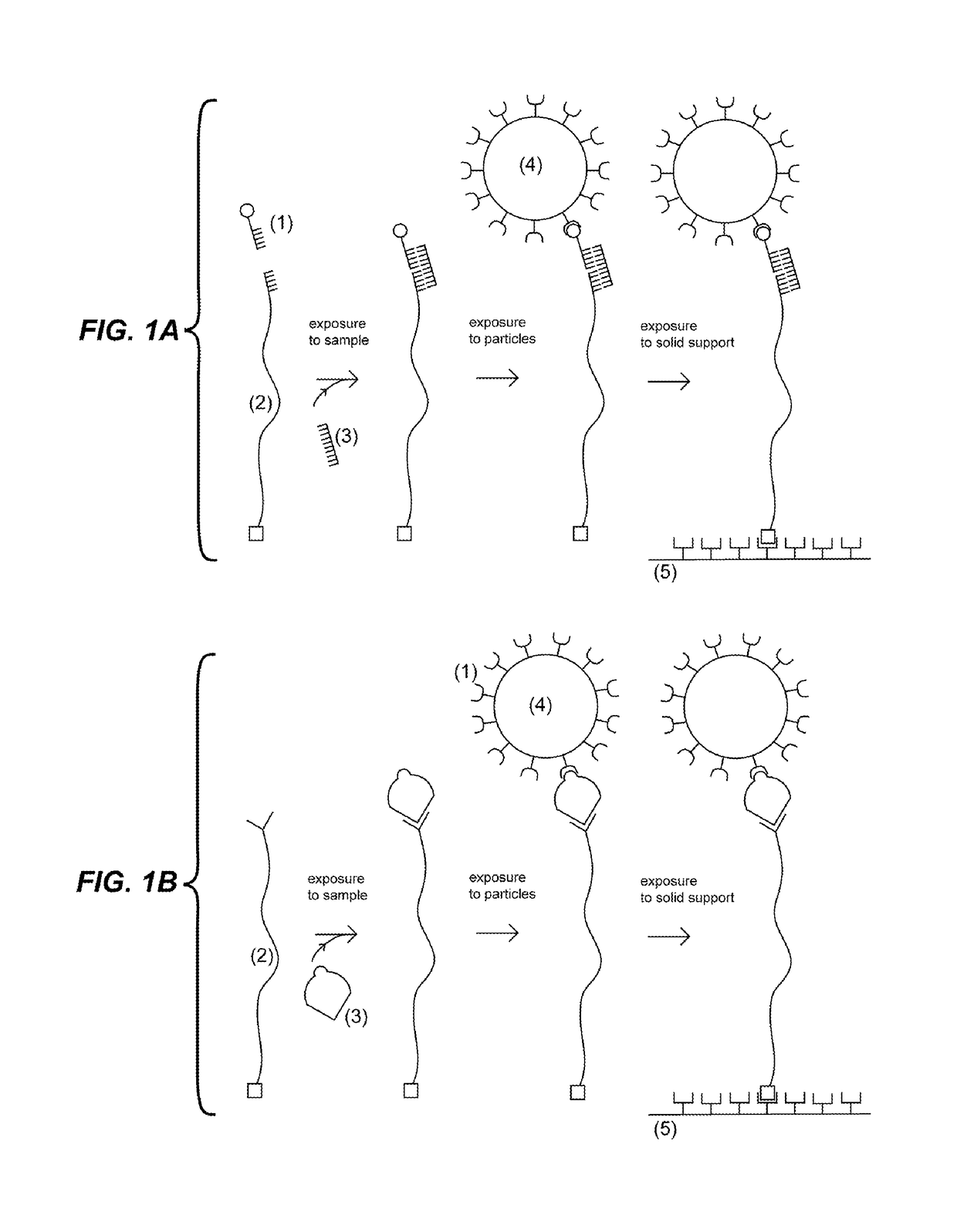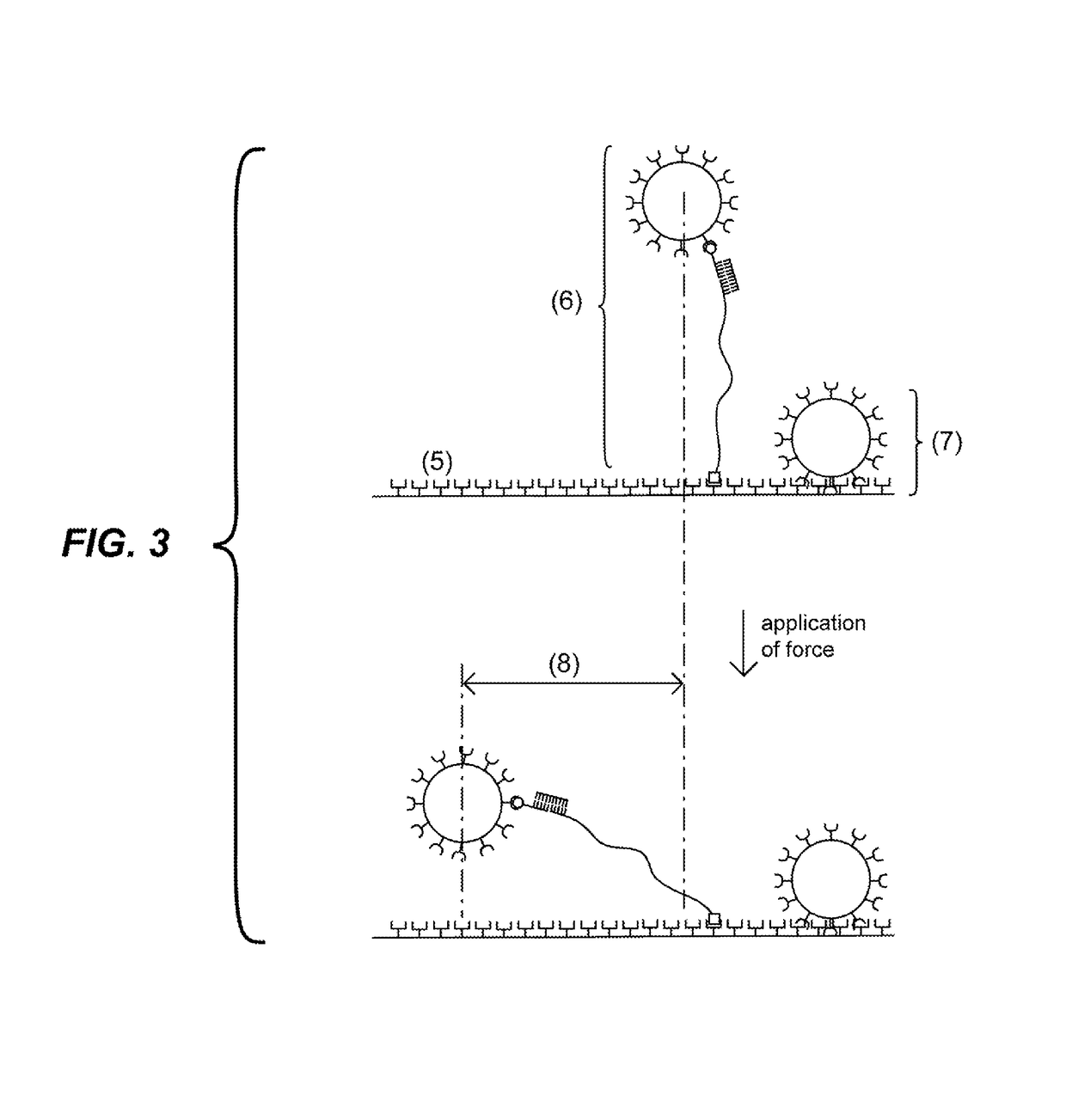Detection units and methods for detecting a target analyte
a detection unit and target analyte technology, applied in the field of detection units and methods for detecting targets, can solve problems such as background noise, and achieve the effects of easy measurement, simple multiplexing method, and increased detection system sensitivity
- Summary
- Abstract
- Description
- Claims
- Application Information
AI Technical Summary
Benefits of technology
Problems solved by technology
Method used
Image
Examples
example 1
[0129]This example demonstrates a procedure to detect a target in a sample at low concentration using magnetic beads. The first probe is generated in the following manner: A plasmid (approximately 10 kilo base pairs) is linearized using a restriction enzyme that cuts it once. Two types of short DNA molecules capable of being ligated to the linearized plasmid are purchased (IDT): the first short DNA molecule is labeled with Digoxigenin and the second has single stranded region complementary to part of the target. The two short DNA molecules are ligated to the linearized plasmid. The second probe, a biotin labeled single stranded molecule, is purchased (IDT) with a sequence complementary to part of the target. Super-paramagnetic beads (Life Technologies) coated with Streptavidin are purchased. The first and second probes are mixed at high concentration (>0.01 μM) with the sample and incubated for few minutes. Magnetic beads are added to the solution and incubated few minutes. In order...
example 2
[0130]This example follows the same procedure as the previous example, but instead of flowing solution in the capillary tube to distinguish the beads tethered by probes, the Brownian motion of the beads is detected. The beads attached via the probes to the solid support undergo Brownian motion and move within a circle of about 1 micrometer diameter. These beads can be discriminated from the beads non-specifically attached to the solid support which move significantly less.
example 3
[0131]This example demonstrates detection of a 60 nucleotide (nt) synthetic DNA oligonucleotide target having the sequence of a section of Mycobacterium tuberculosis rRNA. The first probe was purchased from IDT and consisted of a 24 nt single stranded oligonucleotide having a sequence complementary to the 3′ end of the target and a 5′ biotin modification. The second probe was generated in the following manner: A plasmid (8.5 kbps) was linearized using the restriction enzyme BsmB I (New England Biolabs), which cut the plasmid twice generating a large fragment (approximately 8.4 kbps / 2.8 micrometers) with different 4 nt overhangs at each end, and a small fragment which was separated and discarded by agarose gel purification (QIAquick Gel Extraction Kit, Qiagen). The linearized plasmid was ligated using T4 ligase to two double stranded DNA fragments generated by hybridizing synthetic oligonucleotides. The first fragment had one end with an overhang compatible to one of the overhangs of...
PUM
| Property | Measurement | Unit |
|---|---|---|
| length | aaaaa | aaaaa |
| diameter | aaaaa | aaaaa |
| length | aaaaa | aaaaa |
Abstract
Description
Claims
Application Information
 Login to View More
Login to View More - R&D
- Intellectual Property
- Life Sciences
- Materials
- Tech Scout
- Unparalleled Data Quality
- Higher Quality Content
- 60% Fewer Hallucinations
Browse by: Latest US Patents, China's latest patents, Technical Efficacy Thesaurus, Application Domain, Technology Topic, Popular Technical Reports.
© 2025 PatSnap. All rights reserved.Legal|Privacy policy|Modern Slavery Act Transparency Statement|Sitemap|About US| Contact US: help@patsnap.com



